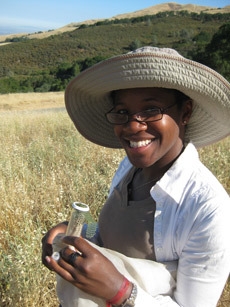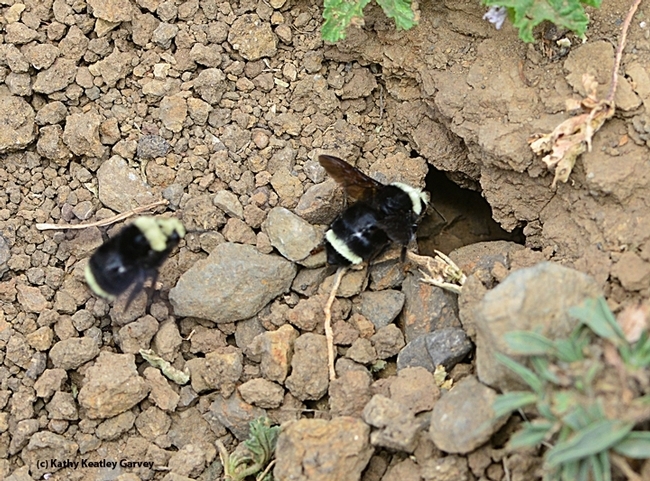
Soils matter.
They matter in the role of bee conservation efforts, as more than 80 percent of bees nest below ground.
So says pollination ecologist Alexandra Harmon-Threatt, an associate professor at the University of Illinois, Urbana-Champaign, who will speak on "Beyond Flowers; Examining the Role of Soils in Bee Conservation Efforts" at the next UC Davis Department of Entomology and Nematology seminar.
The online seminar, the last of the spring quarter, is set for 4:10 p.m., Wednesday, June 2. Host is pollination ecologist and professor Neal Williams. Access the Zoom link here.
In noting that more than 80 percent of bees nest below ground, Harmon-Threatt points out that most univoltine species spend more than 90 percent of their life cycle in contact with soils. (A univoltine species is a species that has one brood of offspring per year.)
"Yet most conservation efforts ignore soils and few research studies consider these critical life stages and possible exposures that occur during them, she says in her abstract. "In a series of studies, our lab has begun to explore how much soils matter and whether ignoring them is to the detriment of conservation."
In her research, Harmon-Threatt zeroes in on understanding the patterns and processes that govern plant-pollinator interactions for conservation. "Pollinators play a vital role in plant reproduction, food production and ecosystem stability but are believed to be declining globally," she says. Her work focuses on identifying and understanding patterns in natural environments to help conserve and restore pollinator diversity. With a particular focus on bees, she investigates how a number of factors at both the local and landscape scale, including plant diversity, isolation and bee characteristics, effect bee diversity in local communities.
Harmon-Threatt received her doctorate from UC Berkeley, where she worked on bumble bee preferences and phylogenetic patterns. She completed a National Science Foundation postdoctoral fellowship in biology at Washington University in St. Louis.
She was recently featured on the podcast, People Behind the Science. Any change in pollinator populations, she told her audience, can have significant effects on natural and agricultural communities. Recent declines in bee populations, in particular, indicate how "little we know about these important insects in their natural environments, she told her audience."
Cooperative Extension specialist Ian Grettenberger, coordinator of the spring seminars, may be reached at imgrettenberger@ucdavis.edu for any technical issues.
Attached Images:
